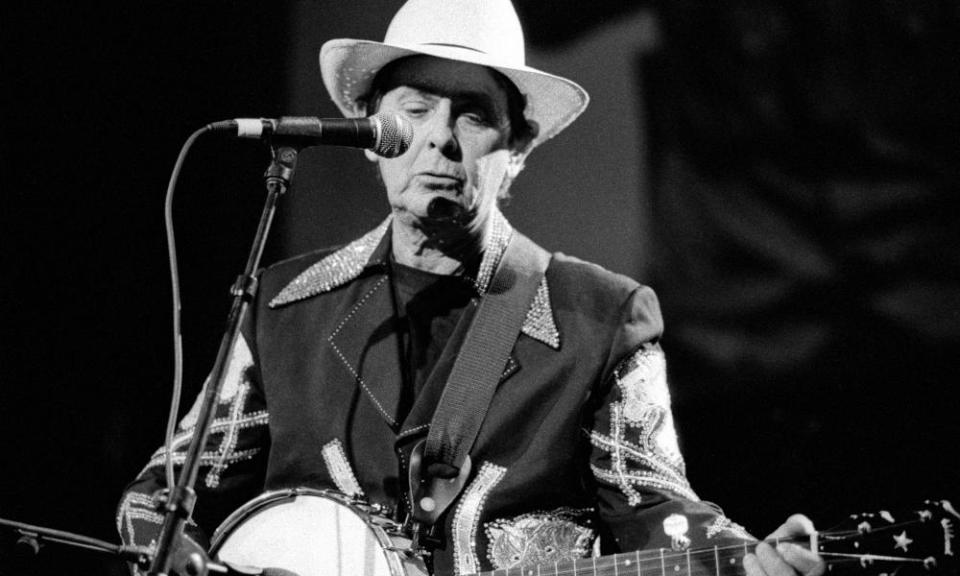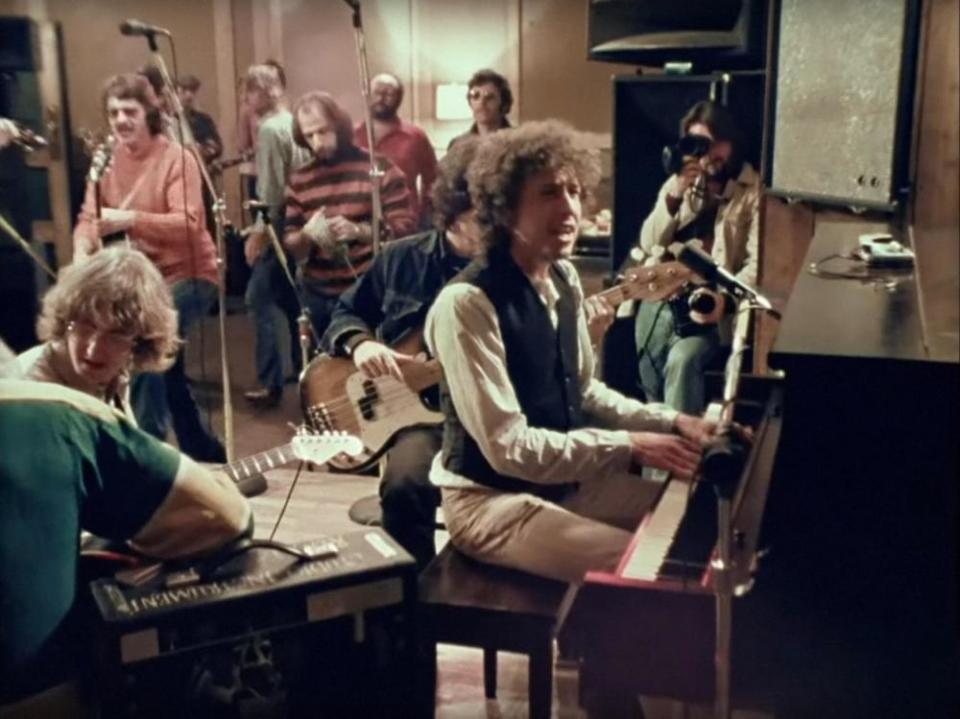Bob Neuwirth obituary
Bob Neuwirth had a career as a singer, songwriter and visual artist that lasted six decades, but nothing he achieved in those guises could erase the dominant memory of his presence as Bob Dylan’s sidekick, accomplice, henchman and licensed provocateur during the time in the 1960s when Dylan was emerging from the folk scene, conquering the world and trying to work out how to deal with his popularity in ways that were not always pretty to observe.
Most symbolically, Neuwirth, who has died aged 82, was the headless figure in black jeans and an orange-and-white striped T-shirt, a camera dangling from his hand, standing behind an inscrutable Dylan in Daniel Kramer’s photograph on the cover of Highway 61 Revisited, the 1965 album that included Like a Rolling Stone and Desolation Row. During what Dylan’s biographer Clinton Heylin called his “amphetamine years”, when the young star’s entourage kept the straight world at bay while sending it up at every opportunity, Neuwirth was always alongside him, the hippest of the hip.

He was in the background of the famous video for Dylan’s Subterranean Homesick Blues, shot in an alley near the Savoy hotel in London; while the singer peels off cards inscribed with phrases from the song’s verses, Neuwirth stands in the background, chatting to the poet Allen Ginsberg.
In a notorious scene from Don’t Look Back, the documentary made by DA Pennebaker of Dylan’s 1965 European tour, Neuwirth insults Joan Baez, Dylan’s increasingly insecure lover and travelling companion. By making it clear that her time is up, he is doing his friend’s dirty work for him, while Dylan sits at a typewriter, impassively tapping out his novel. At such a moment the description of Neuwirth by another Dylan biographer, Daniel Mark Epstein, seems generous: “The master of the revels – handsome, quick-witted and ruthless, he could cut someone to shreds with a well-timed insult or put-down, and then rescue them with a puckish smile.”
Suze Rotolo, Baez’s predecessor in Dylan’s affections, remembered that Neuwirth and Dylan could lower the temperature of a room by 30 degrees just by staring from behind their impenetrable shades.
Born in Akron, Ohio, the son of Clara (nee Fischer) and Robert Neuwirth, Bob attended the school of the Museum of Fine Art in Boston, and had become a familiar figure as a singer and guitarist in local clubs when he met Dylan at the Indian Neck folk festival in Branford, Connecticut, in 1961. Like the rest of the audience, he was impressed by the unknown 19-year-old’s confident and committed performance of a handful of Woody Guthrie songs.

Before long, Neuwirth was in Greenwich Village, becoming the male friend Dylan always seemed to need close to him in those early days. He was at the Newport folk festival in 1965, when Dylan provoked fury among purists by singing with an electric blues band. In turn, Neuwirth would be supplanted as the chosen male kindred spirit by Robbie Robertson, the guitarist with the Hawks, the band Dylan took on a world tour the following year.
In 1965 Neuwirth had introduced Dylan to Edie Sedgwick, one of Andy Warhol’s “superstars”. Together they encouraged her to leave the world of Warhol and the Factory, but it was Neuwirth who had the significant affair with the waif-like model and actor, even though some of Dylan’s songs of the period, including Just Like a Woman, were assumed to be about her.
After falling out of Dylan’s orbit during the singer’s retreat from public life following a motorcycle accident in 1966, Neuwirth made his first solo album for David Geffen’s Asylum label in 1970. Like its several successors, recorded at intervals over the next 25 years (including Last Day on Earth, recorded with John Cale), it made little impact.
Neuwirth co-wrote the song Mercedes Benz with his friend Janis Joplin during a drinking session in a New York bar, when she began singing a line by the beat poet Michael McClure. He also taught her Kris Kristofferson’s Me and Bobby McGee, and she recorded both songs a few days before her death in 1970, for inclusion on an album, Pearl, released early the following year.
He returned to Dylan’s world in 1975 as an integral part of the Rolling Thunder Revue, helping put together the band – including T Bone Burnett and David Mansfield – that travelled the east coast of the US and Canada, playing the shows and shooting the scenes that appeared in Renaldo & Clara, Dylan’s debut as a film director. He was given a spot of his own in the show, and some nights he would add harmonies to Dylan’s When I Paint My Masterpiece.

In 1999 he took part in concerts arranged by the producer Hal Willner at a Brooklyn church and the Royal Festival Hall in London to celebrate the music collected on Harry Smith’s Anthology of American Folk Music half a century earlier. The following year he produced a film called Down from the Mountain, directed by Pennebaker and featuring the musicians whose songs had been heard in Joel and Ethan Coen’s O Brother, Where Art Thou? A follow-up, called The Great High Mountain, also drew on the music from Anthony Minghella’s film Cold Mountain.
Neuwirth was among those interviewed by Martin Scorsese for his biographical documentary on Dylan, No Direction Home, in 2005. His later years were largely devoted to painting in a studio in New York’s meatpacking district.
He is survived by his partner, Paula Batson.
• Bob (Robert) Neuwirth, singer, songwriter and artist, born 20 June 1939; died 18 May 2022

 Yahoo Movies
Yahoo Movies 
